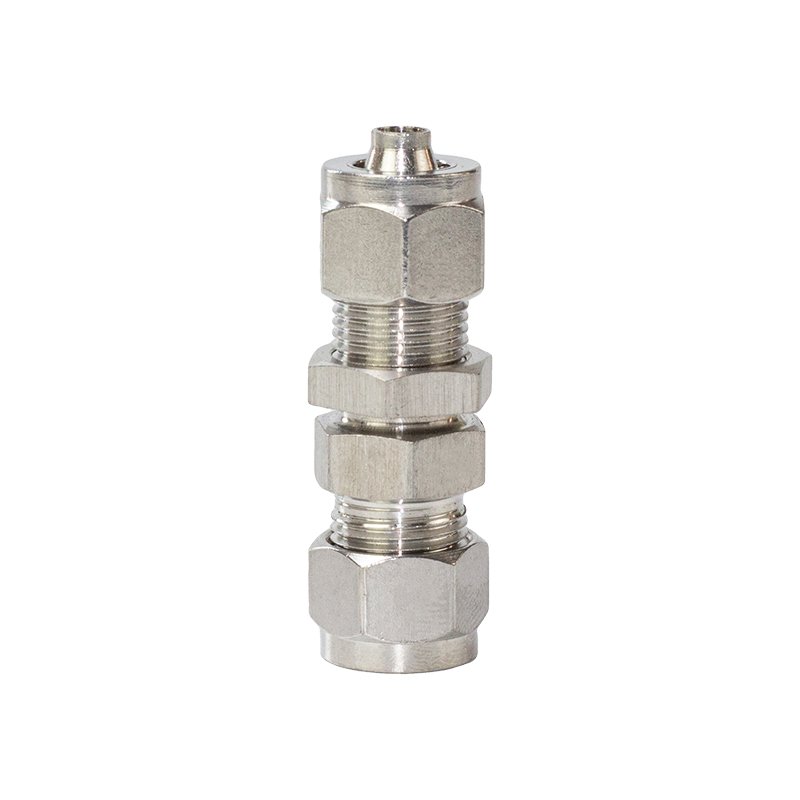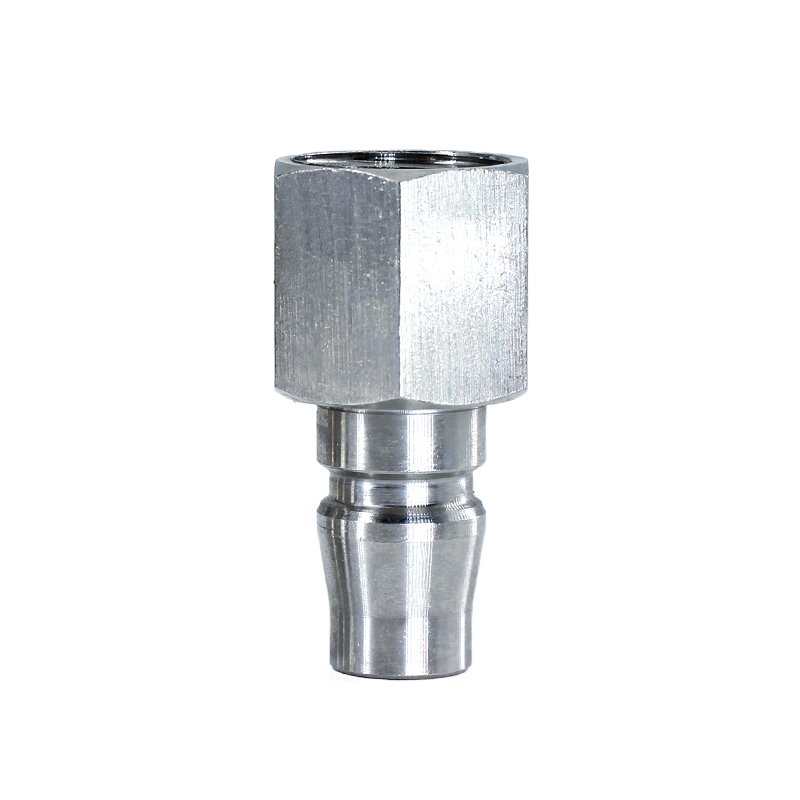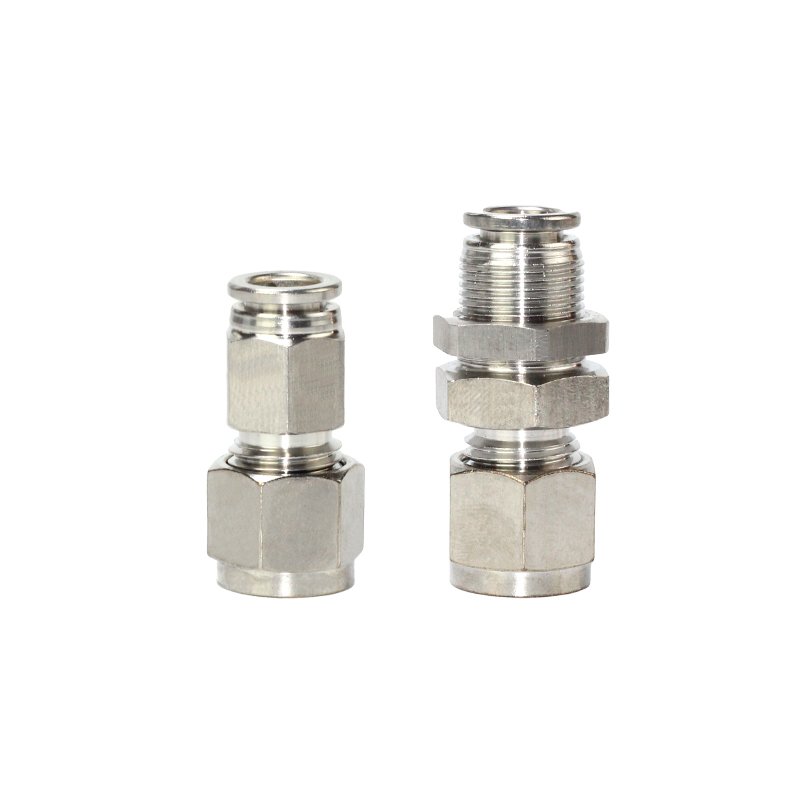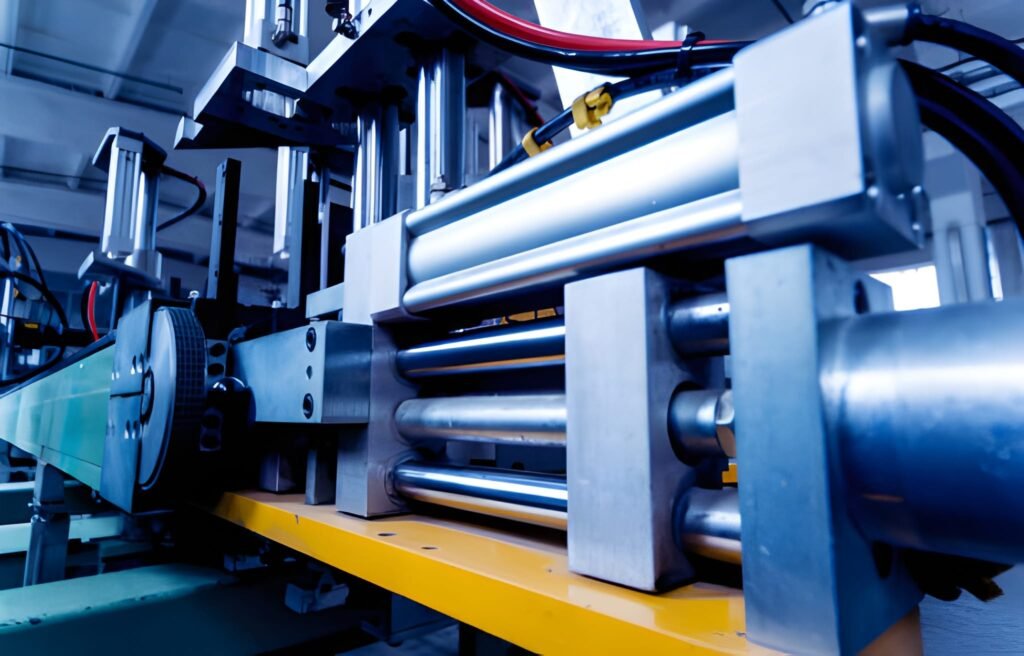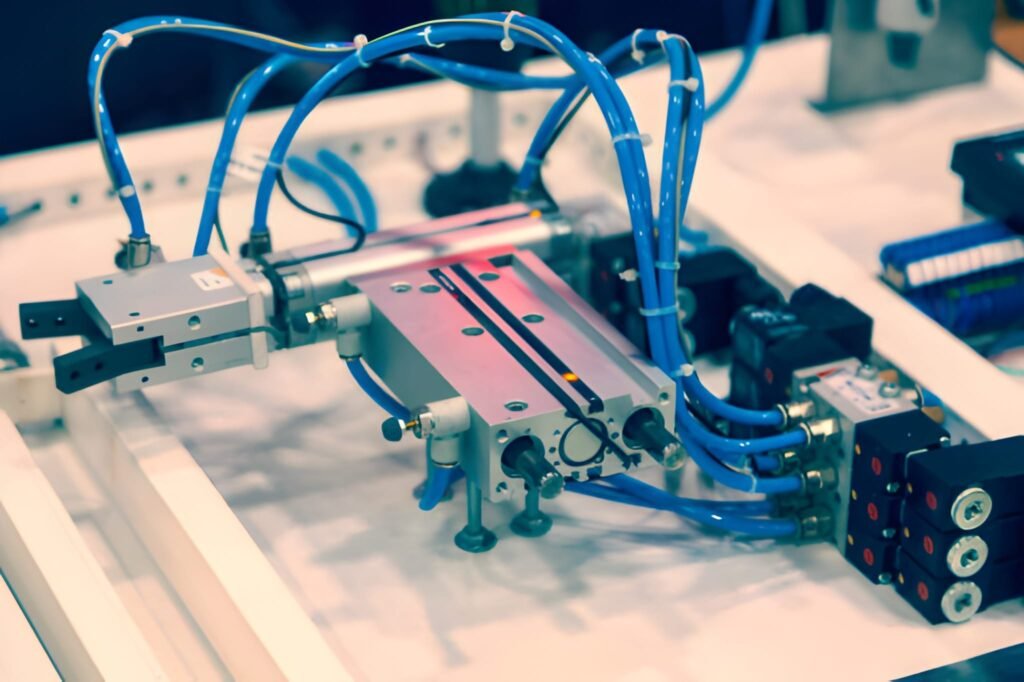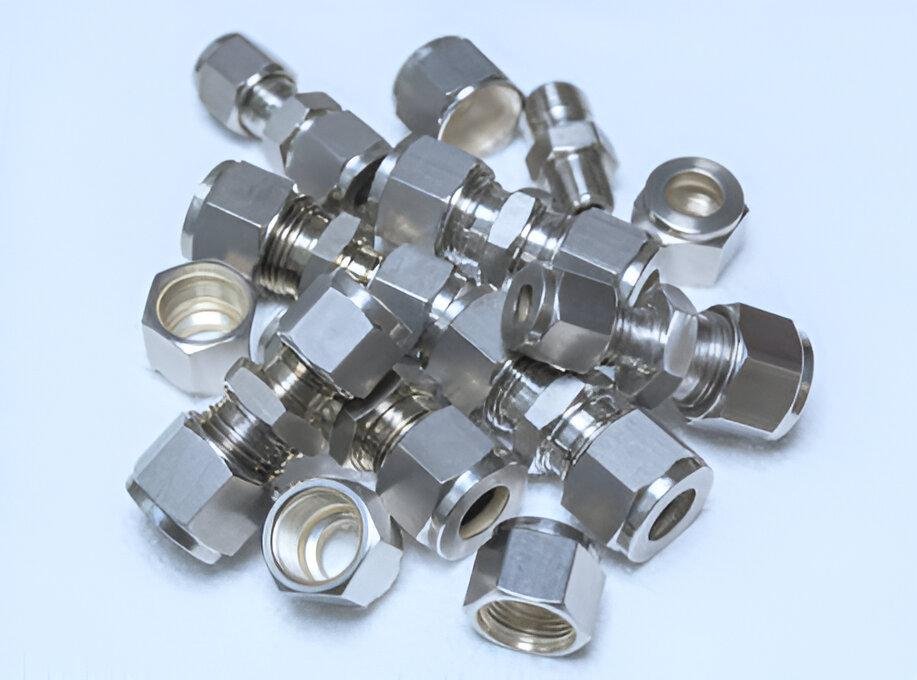Applications
Copper barb connectors are mainly used to connect hoses or pipes, and are widely used in water, oil, gas and other fluid delivery systems. Its barb design can firmly grasp the hose to prevent the hose from falling off, and it is also convenient for the quick connection and removal of the hose. Copper has good electrical conductivity, thermal conductivity and corrosion resistance, and is suitable for various industrial and civil occasions.
Common copper barb connectors have specifications of 1/8 inch, 1/4 inch, 3/8 inch, 1/2 inch, etc., which can meet the connection requirements of different pipe diameters. They are mostly used for pipe connections of air compressors, gas stoves, water heaters, garden irrigation, hydraulic systems and other equipment.
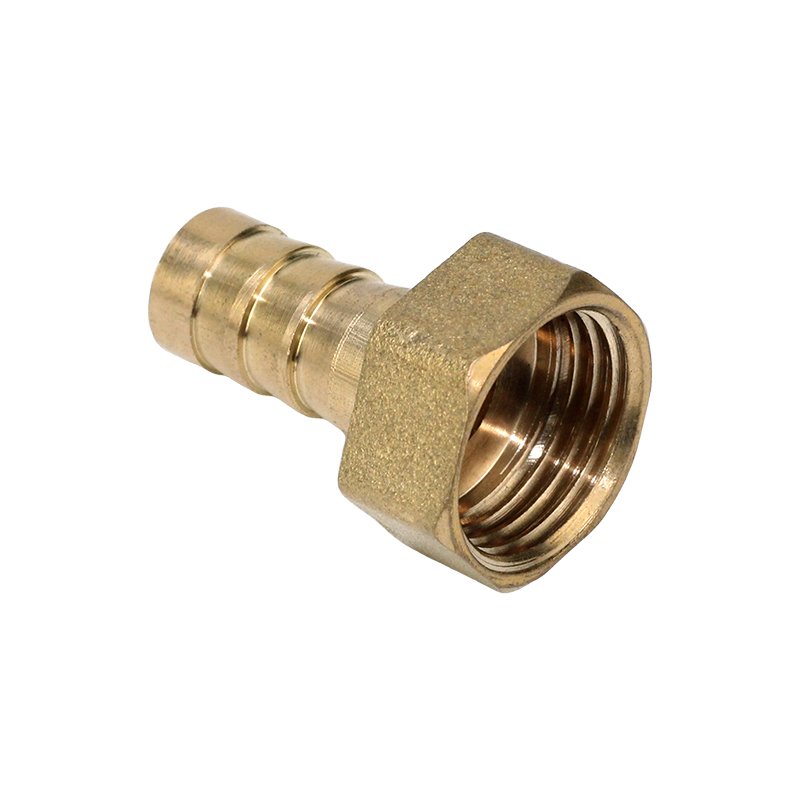
Barb connectors vs. push-on (push-on)
Barb connectors and plug-in connectors are both devices for quickly connecting pipes, but their connection methods are different:
- The barb connector uses the barb to bite the hose, thereby firmly fixing the hose to the connector. When installing, just push the hose to the bottom, and special tools are required for removal.
- The plug-in connector has an O-ring inside, which seals and fixes the pipe through the compression deformation of the O-ring. When installing, just insert the pipe into the connector, and when removing, press the clamp on the connector to remove the pipe.
Compared with the plug-in connector, the barb connector has a higher connection strength and is more suitable for bearing greater tension. However, the plug-in connector is more convenient to load and unload, and it is not easy to damage the hose. The choice between the two depends on the specific application requirements.
Copper barb connectors vs. hose barb connectors
The main difference between copper barb connectors and hose barb connectors is the material:
- Copper barb connectors are made of copper alloy materials such as brass, which have high strength, good electrical and thermal conductivity, and can be used for a variety of media such as water, oil, and gas. However, copper is heavy and relatively expensive.
- Hose barb connectors are mostly made of plastic or stainless steel, which are light and inexpensive. Plastic barbs are suitable for conveying light-load fluids such as normal temperature water, while stainless steel barbs can be used in food, chemical and other occasions with high cleanliness requirements.
In addition, the specifications of copper barb connectors are generally pipe sizes such as 1/4 inch, 3/8 inch, etc., while hose barb connectors are marked with hose inner diameters such as 6mm, 8mm, etc. You need to pay attention to the distinction when selecting.
PEX fittings vs. barb connectors
PEX connectors are specifically used to connect PEX pipes (cross-linked polyethylene pipes), while barb connectors can be used to connect a variety of hoses such as PVC hoses and rubber hoses. The connection principles of the two are also different:
- PEX connectors use the internal clamp ring to bite the PEX pipe wall to fix the pipe. When installing, insert the PEX pipe into the connector and then use a special tool to tighten the clamp ring.
- The barb of the barb connector bites directly into the hose without the need for other accessories. After the hose is inserted into the barb, the barb can prevent the hose from falling off.
PEX pipes are mostly used for home water pipes, while hoses are commonly used in industrial equipment connections. In comparison, barb connectors have a wider range of applications.
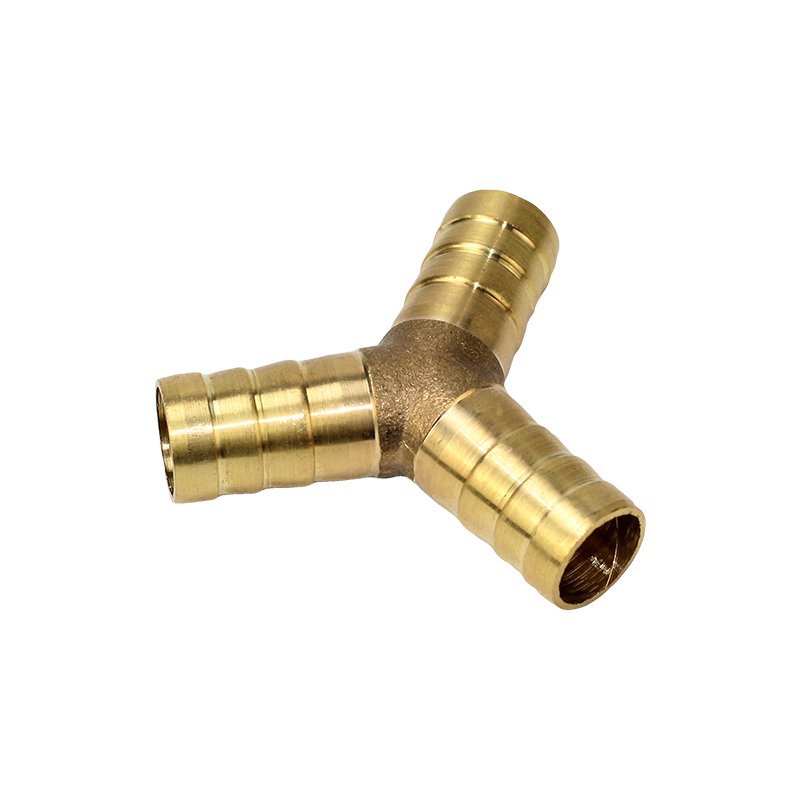
Copper barb connectors vs. quick connects
The quick connector is a tool-free installation pipe connection device, while the copper barb connector is a permanent connection type, which requires the assistance of tools for removal. Their advantages and disadvantages are as follows:
- The quick connector has a simple structure and is quick to install and remove without the help of any tools. However, its sealing and tensile strength are not as good as those of the barb connector, and it is only suitable for conveying low-pressure fluids.
- Once the copper barb connector is installed, it can be used permanently without worrying about the pipe accidentally falling off. However, it is more laborious to install and inconvenient to remove, and the hose may be damaged when replacing the pipe.
The quick connector is suitable for temporary pipes that need to be replaced frequently, while the copper barb connector is more suitable for fixed and long-term pipes. Depending on the use occasion, the two can complement each other.

